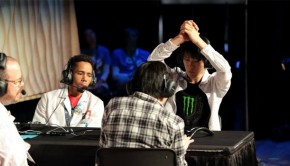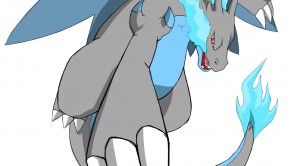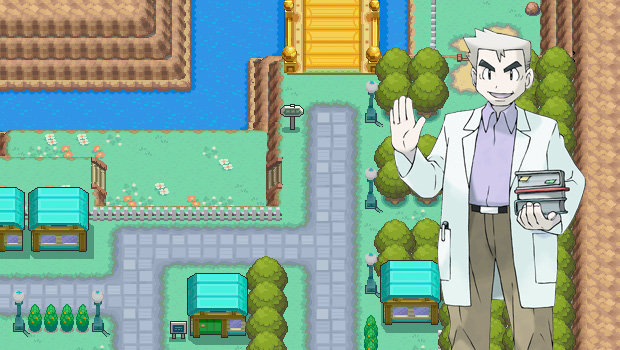If I Could Redirect Your Attention Please
Since my round two loss in the Nationals LCQ of 2011, I had been team building. I managed to create a somewhat unique team that I adored for Regionals, and my efforts left me polished and smiling with a first place finish in Colorado! Ecstatic that I had been able to finally prove myself and emphasize team building outside of the norm, I wanted to outdo myself ten-fold for the VGC Nationals yet again in our beloved Indianapolis for the 2012 tournament. I think it was only a month before the tournament that I finally caved in on my comfort zone and decided to make a team that didn’t utilize Trick Room, and I’m very happy that I did. While Trick Room is still very effective in this metagame, I was somewhat tired of relying on a first turn make-or-break situation in regards to setting up the twisted dimensions. I wanted to jump into the battle with damage and remain feeling confident even if the first turn didn’t go picture-perfectly – I wanted to build a team with flexibility as its defining characteristic.
That being said, I made a team that hardly had any synergy at all at first glance. But, under the magnifying glass…
The Other Guys
So regardless of my desire to use off the cuff mons, I still decided to use some friendly favorites – top, moth, german dragon. Volcarona is a Pokémon that I always longed to use, purely because of the move Quiver Dance – I have a weakness for raising stats in battle, and a move that raises three at once is far too tempting to pass up. Past that, Hydreigon was a Special power-house and dragon that I wanted to abuse against generic enemies, while Hitmontop I begrudgingly decided to use because it fit my Intimidate and Fake Out bill all in one. Much like using Metagross for my Regionals team, I reluctantly used a Pokémon that everyone else was using but did not regret my decision because it’s just a fantastic ally. Crobat was a Pokémon that I had been playing around with long before Regionals and enjoyed very much for it’s first-turn attack with a Flying Gem boosted Acrobatics, and it’s incredibly handy ability in Doubles – Inner Focus. That, and it’s the only reason Zubat isn’t a complete waste of pixels. Vaporeon and Marowak were too cool for school RBY mons, and their respective niches in my team were too good to be true. Let’s kick the analysis up to eleven now, shall we?

“Krycek”
Hitmontop @ Dark Gem
Ability: Intimidate
Careful Nature (+SDef, -SAtk)
-Fake Out
– Close Combat
-Sucker Punch
-Wide Guard
This is definitely not the most standard Hitmontop in the game, but it’s dipped its hands into a little bit of everything the average Top could be using. Since I had decided to use Hitmontop after much deliberation, I also decided that I couldn’t use a standard mon in a standard fashion. He had enough EVs in Special Defense to scoff at Special spread moves and to live through most Gemmed attacks, barring those nasty Critical Hits. He was maxed out in Attack, with about a fourth of the total EVs lumped into HP with the remaining change in Speed. Hitmontop is one of the best support Pokémon, and his reputation preceded itself in each and every battle that I brought him to, which was nearly all of them. Fake Out can be very crucial if used smartly. Whether you’re actually getting a flinch on your opponent or somewhat twisting their arms into Protecting themselves, it’s not a move to be taken lightly. While Detect/Protect would have been handy on Top at times, he was EV’d initially to survive whatever came at him (mind the help Intimidate brings!) while dealing ample damage to his foes. Wide Guard was a filler move, replacing the originally bred Mach Punch, but I was definitely more grateful to have Wide Guard than I was missing the speedy jab. With spread moves running rampant throughout the VGC metagame, Wide Guard was the ace up my proverbial sleeve in a few matches, and thankfully it was never used in vain against single-targeting attacks!
I probably changed Hitmontop’s EV spread more times than I can remember, even just by swapping a handful of EVs around in Speed, HP and Special Defense, but I think I had to just call it quits and stick with the last thing I used instead of second guessing myself. After all, you cannot prepare for absolutely every threat at once. You’ve got to create a core you’re confident with and stick by it.

“Skinner”
Crobat @ Flying Gem
Ability: Inner Focus
Adamant Nature (+Atk, -SAtk)
-Protect
-Acrobatics
-Taunt
-Tailwind
I did not only use Gems on this team, I swear! Crobat was definitely a necessity to this team, as may be obvious by the move Tailwind. Taunt was essential as well in stopping Trick Room/whatever enemy Cresselia may be carrying. What set Crobat apart from other Tailwind users (especially Tornadus, who can also use acrobatics) was his ability — Inner Focus. Tornadus could always Protect and Tailwind the next turn, but that would be a waste of a turn. Since I’m using a Fake Out user as my lead most of the time as well, wasting Fake Out’s benefits by Protecting turn one and setting up Tailwind the next turn would be equally foolish! Though it may not seem like it thus far, my team was built around switching. Crobat has some glaring weaknesses (Rock, Ice, Psychic, Electric, actually his only four weaknesses…) but he also has some stellar resists (x4 Bug, x4 Fighting, x4 Grass along with resisting Poison, but who uses that offensively, honestly…).
Crobat is a bonafide monster. His ability allows him to act without hesitation in the very first turn of a match, a quality many Pokémon should be envious of. With a STAB and Flying Gem boosted Acrobatics, he is a major threat to anything that does not resist Flying. Leading with Crobat was never difficult unless Thundurus was about, and I had to worry about Taunt. Otherwise, Crobat’s role in the first turn alongside Hitmontop was very straightforward: Tailwind if you’re not going to survive the first turn, Acrobatics if you can kill whatever is not being Faked Out, Taunt possible Trick Roomers/Cresselia depending on the partner Pokémon and what you believe Cresselia is there to do, or Protect and read the situation if you’re at all positive it’s not any of the former three — rarely the case. I think there was only a single match where I didn’t lead with Crobat, which was a very fun situation. I think Crobat worries a lot of people, especially those who realize too late that it cannot be flinched by Fake Out, and sometimes keeping him in the back is useful. Sometimes. Most of the time you should use him turn 1 and make people nervous immediately instead of later.

“Scully”
Volcarona @ Lum Berry
Ability: Flame Body
Modest Nature (+SAtk, -Atk)
-Protect
-Heat Wave
-Bug Buzz
-Quiver Dance
Your Volcarona? Darling, this is m-m-m-my Volcarona. I’ve thus far neglected including EV spreads for my Pokémon because I may be using a few of them at Worlds – but rest assured, nothing is that fancy! This Volcarona was actually Calm before it was Modest — because I was using Quiver Dance, I wanted to better take advantage of the Special Defense boosts rather than capitalizing on the Speed and Special Attack. My team’s theme was built around switching and specific resistances and random bulkiness, and Volcarona was no exception. With enough Special Attack to knock out anything not named Heatran and not protected by Sandstorm Special Defense boosts after a single Quiver Dance, Volcarona was a force to be reckoned with — thoroughly reckoned with. Its Special Defense was maxed out, with the rest of the EVs going into Speed to ensure its superiority to most slow-Scarfed pokemon like Tyranitar after said single Quiver Dance. Volcarona is actually a very strong Special wall if EV’d appropriately and boosted with just a Quiver Dance or two.
Add a Lum Berry, and you may find yourself with a pretty clean sweep. Having a Lum Berry on Volcarona meant I could Quiver Dance against Thundurus that thought they could stop me in my tracks while attacking that Thundurus with my ally and coming out clean and powerful for the next turn. That, or I would protect the turn after I QD’d to negate their Thunder Wave attempt again and THEN knock them out with my ally. I’d take either! Having a Lum Berry also allowed me to Quiver Dance in the face of enemy Amoongus, usually under Trick Room, so that I could boost my Special Defense to better survive the slow onslaught, while also allowing myself to Protect the next turn and further stall out Trick Room.
Volcarona’s biggest weakness, much like any careless bug, is a big fat rock to the face. Hitmontop’s Wide Guard was countless times a blessing, though I think I may have only led TopMoth once out of my 6 matches. Still, switching in Hitmontop to Intimidate some enemy Rock Sliders while Volcarona Protected and then using Wide Guard the next turn (or Fake Out, depending on what Volcarona could possibly KO in the situation) was a cushion I rested on comfortably if not lightly. I had a bad tendency of bringing Volcarona to battle Rain Dance teams for some odd reason. I think I wanted to test the Special Defense I had alongside the attacking power. I actually just have a long-standing grudge against Ludicolo and loved bringing all of my counters for him at all times. I think the most basic synergy my team had was being able to damage whatever was on the field significantly to better support my Pokémon that had spread moves. That is, Pokémon A could help to damage the enemy Pokémon on the left so that Pokémon B could knock out the left Pokémon with a spread move and top off the enemy Pokémon on the right with full damage, instead of split damage. Very handy. I feel like I have been seeing more Volcarona usage pop up after Nationals, but I’m not surprised – it’s a versatile and very scary Pokémon if you don’t have an idea of how to quickly snuff it out.

“Vaporothy”
Vaporeon @ Wacan Berry
Ability: Water Absorb
Modest Nature (+SAtk, -Atk)
-Protect
-Muddy Water
-Icy Wind
-Hidden Power [Grass]
Vaporeon. One of the first few Pokémon I absolutely fell in love with when I first laid eyes on it in Pokémon Red. Eager to use Pokémon that were both unpopular and from earlier generations, I was ecstatic to find that Vaporeon fit a crucial role on my team and filled a type necessity my team sorely needed. Firstly, I wanted a Water pokemon. Pure Water alone only has two weaknesses, and when combined into dual typings, can sometimes knock off one weakness and leave only one remaining (Water/Ground, Water/Dragon). My team’s Speed advantage mostly came from Tailwind, and I didn’t want to fully rely on Crobat to decide how the Speed situation was going to unfold. Volcarona has Quiver Dance to sort of take care of herself if need be, but that still wasn’t satisfactory.
Icy Wind is a very powerful move. Not in actual attacking power, but in its double-targeting capability and stat dropping function. Icy Wind hits both enemy Pokémon while simultaneously dropping their Speed one stage. In VGC, much like any tier or mode of Pokémon battling, Speed is everything. Knowing that you are not going to outspeed Pokémon without help suggests a bulkier EV spread, while inherent Speed allows for more attacking power. Vaporeon was the catalyst for the former becoming the latter, while being one in the same, if that makes any sense. Volcarona had enough Speed to outspeed most things after a Quiver Dance, but it also had enough Speed to outspeed anything that wasn’t Scarfed and most slower things (Tyranitar) that were after an Icy Wind. Use both moves in conjunction, and you’ve instantly created a two-stage speed gap, with Volcarona out on top.
Vaporeon was a very clutch Pokémon on this team — it allowed for more spread move damage that few things resisted, Speed dropping support against the enemy, and a Grass move to leave it unhindered against fellow Water Pokémon. While I used Vaporeon the least out of my 6 matches, I still used it at least twice, and both times it performed exactly as it needed to to ensure victory on my side. A Wacan Berry allowed me to survive any rogue E2lectric attacks while using Icy Wind against the offender, allowing a more ample retaliation with Muddy Water if I were to outspeed. While Vaporeon’s role could have maybe been fit better with a different Pokémon, I was too overwhelmed with the opportunity to actually use a Vaporeon, and so I went with style points over a possibly better member for my team. I did my best, I have no regrets!

“Mulder”
Marowak @ Thick Club
Ability: Lightningrod
Adamant Nature (+Atk, -SAtk)
-Protect
-Bonemerang
-Rock Slide
-Earthquake
The best was not saved for last — I just couldn’t wait anymore. Marowak was the all-star of this team, purely because of its ability: Lightningrod. Lightningrod redirects all Electric attacks to the Pokémon with said ability, along with raising Special Attack. Obviously Marowak cannot benefit from a Special Attack boost, but the rest of his teammates sure do appreciate him not only negating an attack type from them, but also a very popular and crippling move in the VGC metagame: Thunder Wave. Now, having a Pokémon with Lightningrod on your team purely to protect the rest of your team from Thunder Waves seems far too specific to actually be worthwhile. Well, if that’s your mindset, then you have never suffered the wrath of Thundurus with its Prankster ability. Prankster allows any support-type move or move that does not cause direct damage to have +1 added to its priority. This means that any support-type move turns into an annoying Quick Attack. While Thundurus became more popular due to the Japanese Nationals players abusing its Prankster ability to Swagger both ally and enemy mons alike, that doesn’t mean that they’ve forgotten all about Thunder Wave — and neither have I.
I first put Marowak on my team as a joke, just to counter team everyone that was relying on Thundurus/Thunder Wave to immediately cripple opposing teams. Then, Marowak started changing the game significantly by switching in and stealing Thunder Waves, leaving the opposing player dumb-founded. It kept happening, too. Marowak would steal Thunder Wave from Thundurus, Cresselia, Gyarados, Ferrothorn… anything that could learn the move and would use it. I felt like I was sitting on a hot little secret with Marowak. But, if I were going to use him, he would need a lot of help. He’s maxed out in both attack and speed, with the remaining 4 EVs going into HP. Marowak has very respectable Defense, sitting at 130 without any investment. Even though his HP is only about 6 points higher than that, he doesn’t mind taking one or two strong physical hits. Marowak was also able to survive whatever special attacks Thundurus would throw at it after learning that all his Electric attacks were nerfed and answer with a very strong Rock Slide thanks to his Thick Club giving him nearly 300 attack. So, no, there is no argument to use Rhyperior over Marowak purely for the sake of Lightningrod. Marowak is both stronger and faster. In Tailwind, Marowak is a disaster for the opponent. So long as he isn’t Intimidated, Rock Slide will do a lot of damage to anything that doesn’t resist it, and Bonemerang/Earthquake are even harder to nullify, considering Marowak has the STAB boost with those moves where he does not with Rock Slide.
The scariest situation I have ever been in with Marowak was actually in a friendly battle against user: TeeJay. He was smart enough to Trick my Thick Club away with Sableye and, even worse, replace it with a Lagging Tail. Even so, I was able to Bonemerang his Terrakion into oblivion. Whatever Marowak lacks in stature and notoriety, he more than makes up for with pure, brute force.

“X”
Hydreigon @ Life Orb
Ability: Levitate
Modest Nature (+SAtk, -Atk)
-Protect
-Dragon Pulse
-Dark Pulse
-Flamethrower
Hydreigon was maxed out in Special Attack and Speed with 4EVs in HP. Pretty standard hard-hitting attacking spread, sitting at 194 SAtk boosted with a Life Orb to dish out very painful damage. Hydreigon could 2KO almost anything that didn’t resist any of its moves, and more often than not one-shotted those that were hit Super Effectively, besides especially bulky pokemon like Cresselia. Hydreigon was the last member of this team, added for its strong-hitting Special attacks and immunity to Earthquake, a team characteristic that was somewhat lacking. Marowak actually had Perish Song as its fourth slot before Hydreigon was added, but I decided that 3 earthquake resistances (Wide Guard Hitmontop) were good enough to give Marowak his most useful attack. Hydreigon did not disappoint and was able to partner up and deal KOs in conjunction with whomever was out on the field alongside him. Hydreigon was actually my generic Rotom-W counter, a Pokémon that could easily tear through my team if not handled correctly. Hydreigon is still easily walled by not-so common threats like Heatran and most other Steel type Pokémon that can’t be hit neutrally by any of its moves or super effectively (take that, Scizor!). Hydreigon was a very sturdy Pokémon and he served me well. I will forever remain a life-long fan.
Tournament Review
While I did scribble some short hand notes in my first few matches, I stopped during round 6, only my 4th battle, when I lost due to a first-turn Freeze that left me handicapped for the rest of the 8 or 9 turn match. I was very discouraged after that battle, but I walked around with my iphone blaring angry but courageous music into my ears and shrugged off the match, reminding myself that I was playing Pokémon. Throughout the tournament I only missed one Rock Slide, dodged a few moves due to Muddy Water Accuracy drops, and suffered maybe one or two Critical Hits while dealing out the same amount. Overall I played hard and I earned my wins as fair as I possibly could have, and I was very happy to make the top cut. After advancing to the second round I was heavily outmatched in teams and took a hard 0-2 loss, which I was extremely sour over for about an hour. But now, with the euphoric Indy weekend finally finished and having returned home, the flame in my heart for Pokémon has only been further ignited. I cannot wait to take a new or edited team to Worlds and compete once again with people that love this video game just as much as I do.
Final Thoughts
Pokémon is a luck based game. It is very much a strategy-driven game, but once you have accepted the luck factor as a player, all you can do is either build a team to negate the effects of luck as much as possible, or abuse them to your heart’s content. Select either of those choices, or simply just make a team that you know inside and out, enjoy playing with, and feel confident about. The best Pokémon teams are not those with the best Pokémon, best movesets, or best EV spreads. The best Pokémon teams are those with the most decisive, researched, and, more often than not, creative trainers. If you’re going to take anything away from this tournament report, it should be that much like in any other capacity: PRACTICE MAKES PERFECT. While you may consider yourself a Pokémon master already, you cannot speak about all the other trainers in the world, and it is only through practice, especially via WiFi Connection, that you can get a taste of the other masters around the globe. Honing your skills, be it under heavy Wifi practice or waterfalls, is a must – and it’s not half-bad to make some friends along the way. 🙂
















